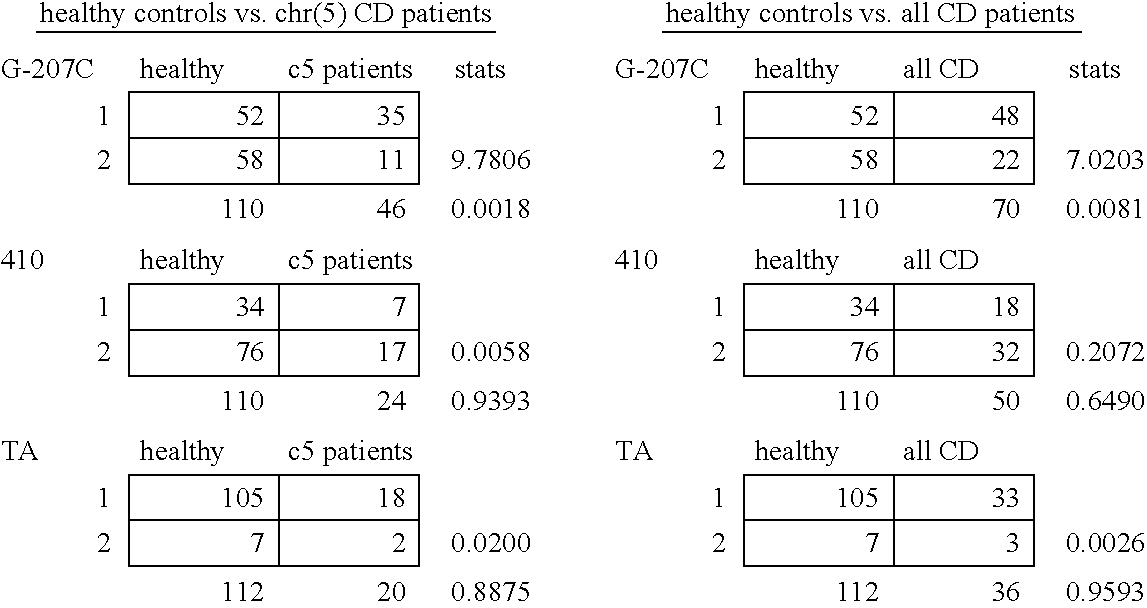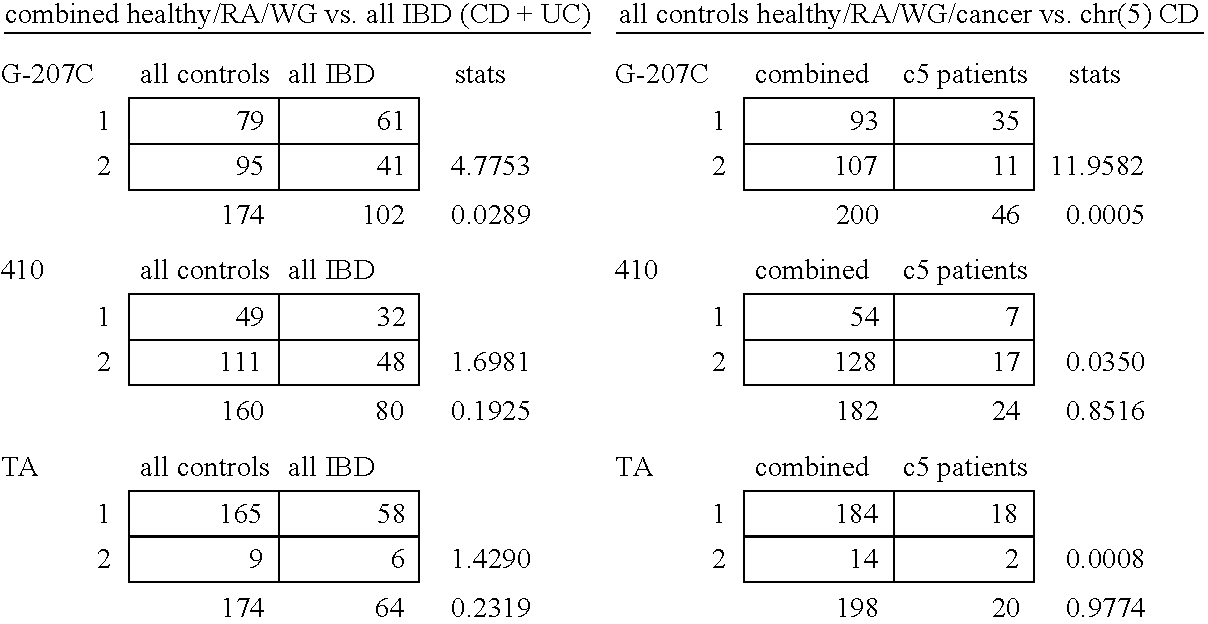Polymorphisms of the OCTN1 cation transporters associated with inflammatory bowel disorders
a cation transporter and polymorphism technology, applied in the field of biological material analysis, can solve problems such as metabolic stress, and achieve the effect of poor carnitine transport and poor efflux of molecules
- Summary
- Abstract
- Description
- Claims
- Application Information
AI Technical Summary
Benefits of technology
Problems solved by technology
Method used
Image
Examples
Embodiment Construction
[0020] Summary. A functional analysis and in-depth mutation screening of candidate genes was performed in the 250 kb region of chromosome 5q31, described by Rioux J D et al., Nature Genet. 29, 223-228 (2001). Also examined were genes in the region for expression level differences in inflamed and non-inflamed gastrointestinal (GI) tract tissue from Inflammatory Bowel Disease patients. Two genes, OCTN7 (SEQ ID NO:1) and OCTN2 (SEQ ID NO:3), showed significant downregulation in inflamed Crohn's Disease tissue. A coding sequence mutation in the OCTN1 gene that significantly reduces its ability to transport the organic cation carnitine and the prototypical organic cation substrate tetraethyl ammonium (TEA) was detected. Additionally, a mutation in the promoter region of OCTN2 was found to downregulate both basal transcription and transcription induced either by heat shock or arachidonic acid. This transcription difference is apparently due to the disruption of a binding site for heat sho...
PUM
| Property | Measurement | Unit |
|---|---|---|
| Fraction | aaaaa | aaaaa |
| Fraction | aaaaa | aaaaa |
| Fraction | aaaaa | aaaaa |
Abstract
Description
Claims
Application Information
 Login to View More
Login to View More - R&D
- Intellectual Property
- Life Sciences
- Materials
- Tech Scout
- Unparalleled Data Quality
- Higher Quality Content
- 60% Fewer Hallucinations
Browse by: Latest US Patents, China's latest patents, Technical Efficacy Thesaurus, Application Domain, Technology Topic, Popular Technical Reports.
© 2025 PatSnap. All rights reserved.Legal|Privacy policy|Modern Slavery Act Transparency Statement|Sitemap|About US| Contact US: help@patsnap.com



